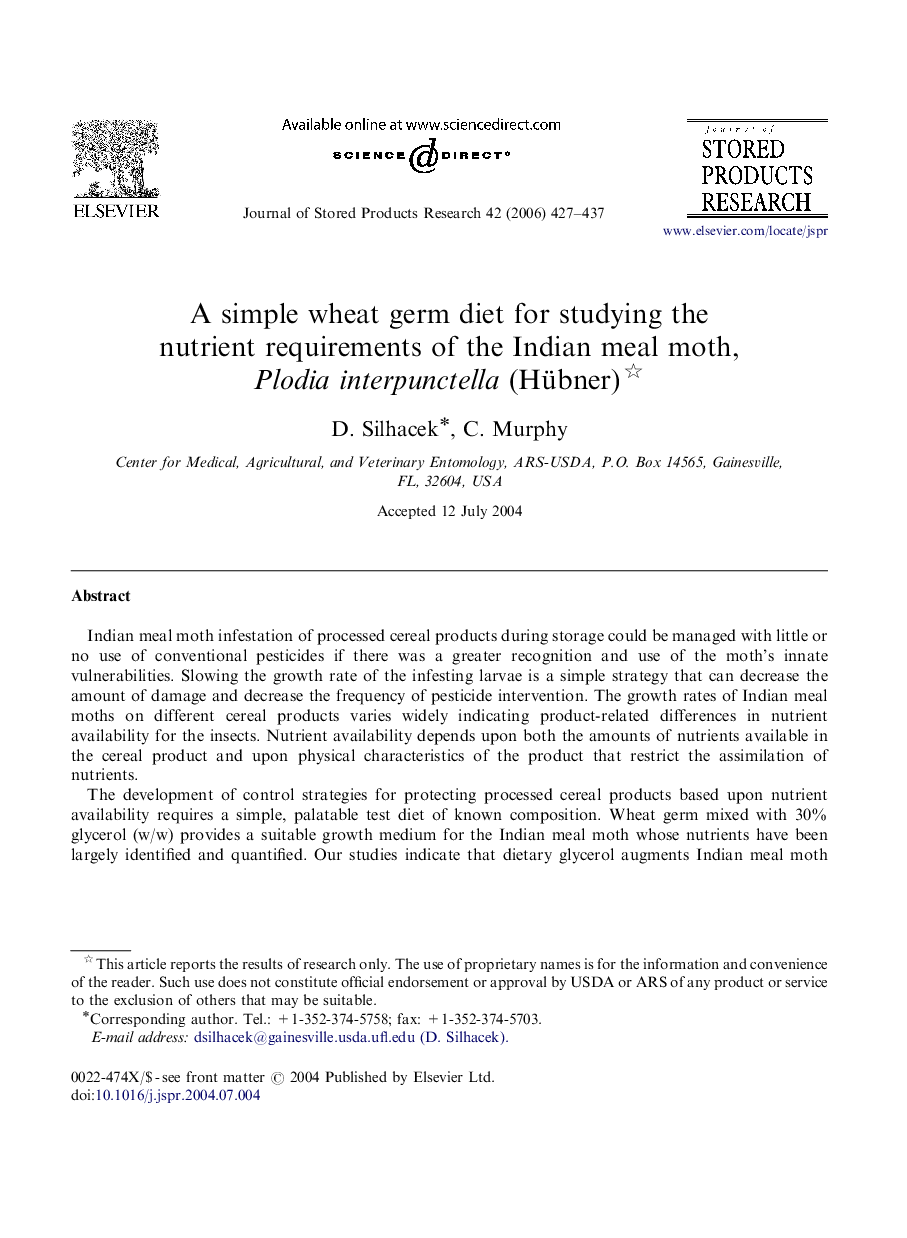| Article ID | Journal | Published Year | Pages | File Type |
|---|---|---|---|---|
| 4517588 | Journal of Stored Products Research | 2006 | 11 Pages |
Indian meal moth infestation of processed cereal products during storage could be managed with little or no use of conventional pesticides if there was a greater recognition and use of the moth's innate vulnerabilities. Slowing the growth rate of the infesting larvae is a simple strategy that can decrease the amount of damage and decrease the frequency of pesticide intervention. The growth rates of Indian meal moths on different cereal products varies widely indicating product-related differences in nutrient availability for the insects. Nutrient availability depends upon both the amounts of nutrients available in the cereal product and upon physical characteristics of the product that restrict the assimilation of nutrients.The development of control strategies for protecting processed cereal products based upon nutrient availability requires a simple, palatable test diet of known composition. Wheat germ mixed with 30% glycerol (w/w) provides a suitable growth medium for the Indian meal moth whose nutrients have been largely identified and quantified. Our studies indicate that dietary glycerol augments Indian meal moth growth and development on wheat germ by moisturizing the diet and probably provides a source of carbon and energy for larval growth.
